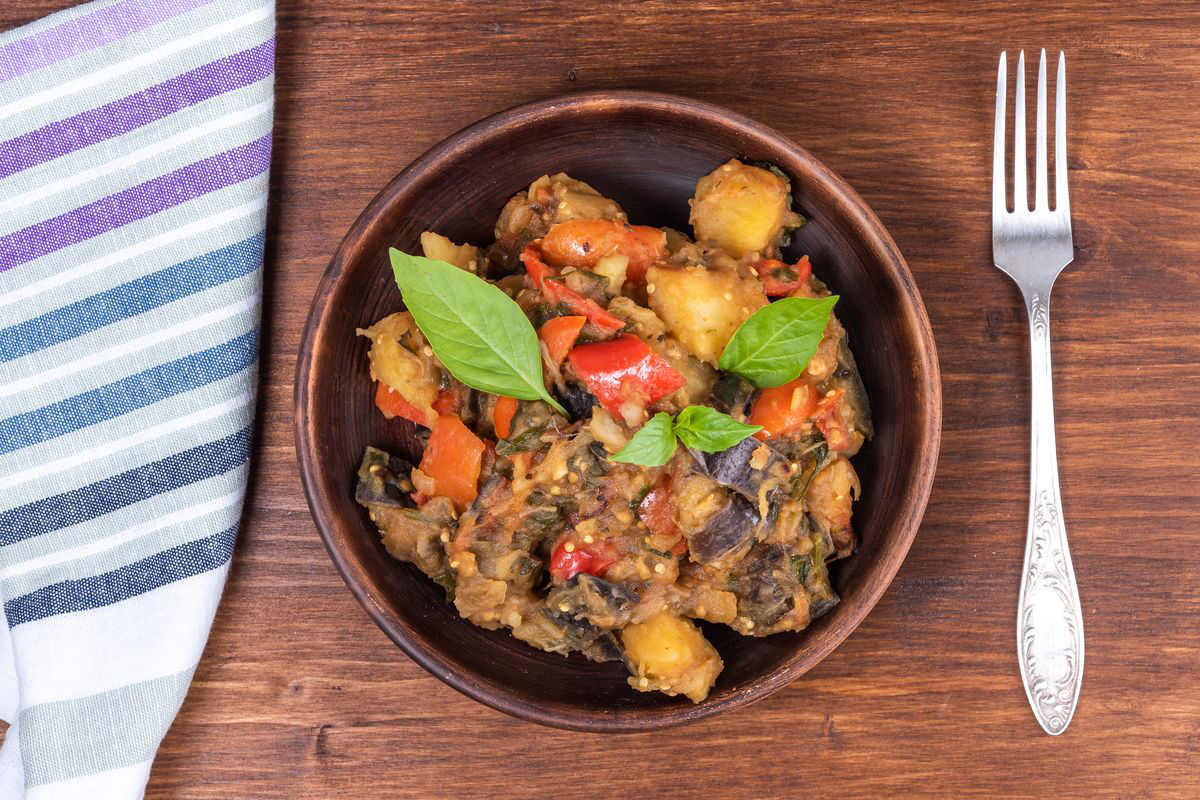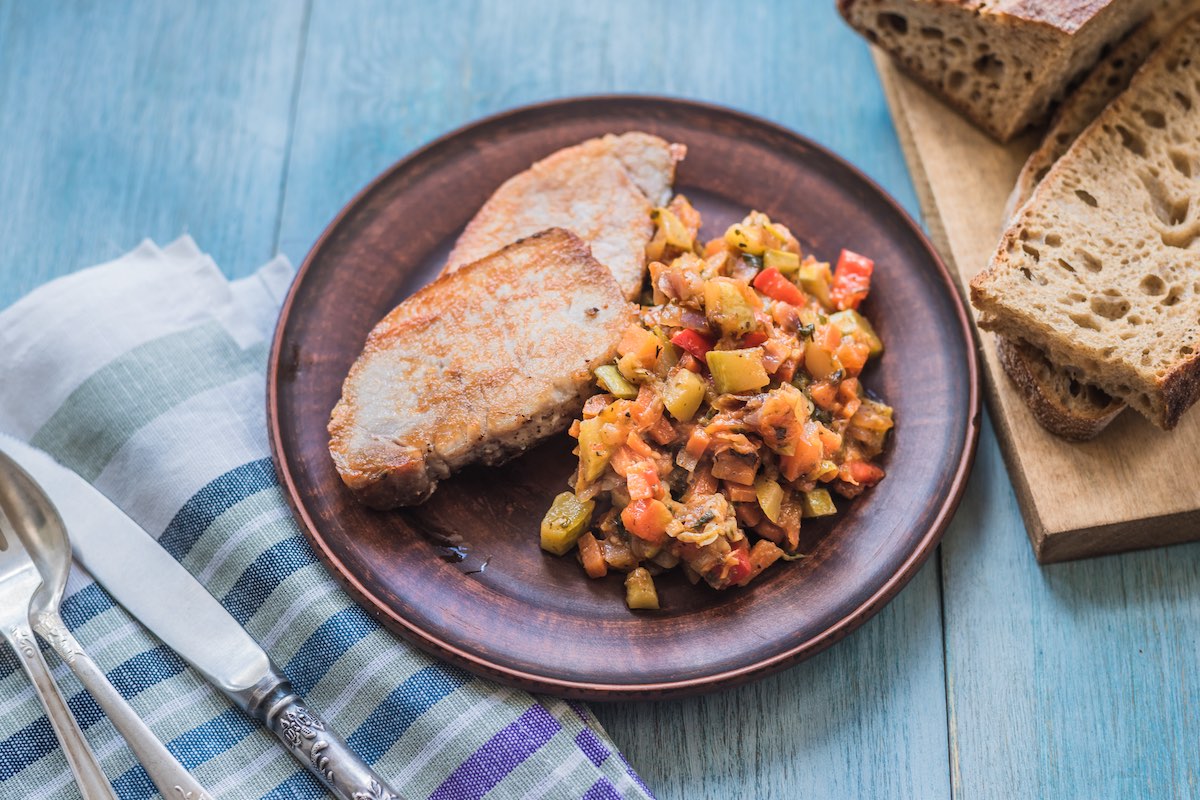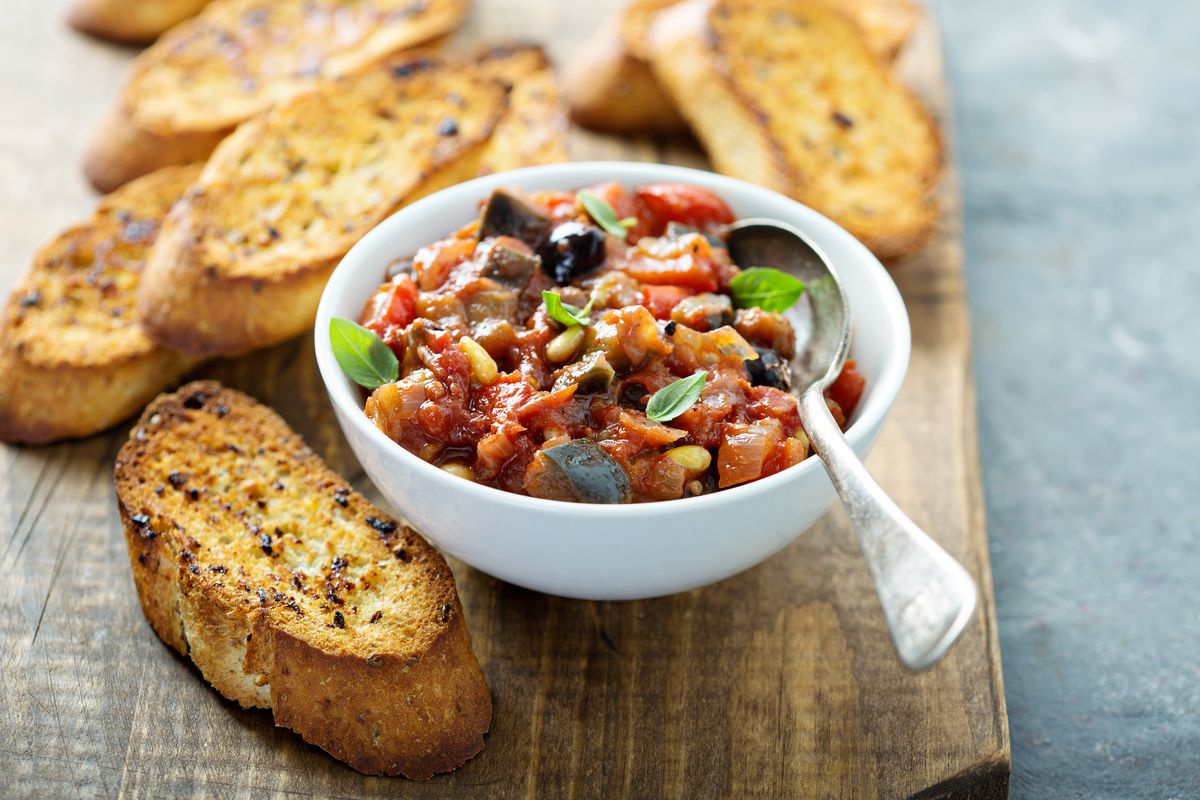Recipes
Vegetable ciambotta


For a side dish that is as quick as it is healthy, here is the traditional recipe for vegetable ciambotta prepared as tradition dictates.
The term ciambotta refers to a vegetable side dish typical of southern Italy . If you delude yourself into thinking that you have the only true recipe, we are sorry to have to prove you wrong. Finding the original recipe for vegetable ciambotta is equivalent to finding the famous needle in the haystack. Although the basic ingredients are more or less always the same, subtle variations differentiate ciambotte from region to region and, sometimes, from city to city.
We offer you a ciambotta made with summer vegetables following the most well-known and widespread recipe. The choice is yours whether to serve it as a side dish or as an appetizer , perhaps together with some toasted slices of homemade bread.

How to prepare the ciambotta recipe
- Start by carefully washing all the vegetables . Cut the aubergines and courgettes into cubes .
- Peel the potatoes and cut them into cubes.
- Cut the peppers in half and clean the inside, then cut them into strips (or cubes if you prefer).
- Divide the cherry tomatoes in half.
- Take a pan and pour plenty of olive oil on the bottom and turn on medium heat. Once hot, brown the chopped onion quite finely.
- After frying them for about 5 minutes, start adding the aubergines . Proceed with the potatoes , courgettes and peppers . Cook for 10 minutes.
- After this time, add the cherry tomatoes and tomato pulp . Season with salt and pepper and flavor with basil .
- Close with the lid and cook for another 30 minutes or until the potatoes are tender. If necessary, add water a little at a time.
In this video you can see all the steps (very simple) and the final consistency of the dish. Doesn't that make you want to be a shoemaker?
Conservation
The ciambotta will keep for 2-3 days in the refrigerator . You can enjoy it at room temperature or after heating it in a pan or in the microwave. It is also excellent for freezing so that you have a supply available for the winter too. It will keep for up to 6 months.
Origin and history
It is really difficult to trace the origins of the ciambotta. The history of this dish is in fact lost in the mists of time when farmers exploited the ingredients they had available to create simple but tasty dishes. In fact, the term derives from the French chabrot which means mixture .

Ciambotta: the variations
Which country you go to, whatever you find. In addition to the recipe we have proposed, there are some more or less similar and more or less rich variations. The Lucanian ciambotta for example includes the addition of sausage and, once cooked, scrambled eggs. It is often served in the "peasant way", i.e. inside a hollowed-out loaf.
The Apulian ciambotta shares only the name with the more traditional recipe as it is based on the catch of the day to which tomatoes and peppers are added. Tomatoes, peppers and onion, together with the leftover boiled meat, give life to the Neapolitan ciambotta .
It changes name and becomes cianfotta in Ventotene where, however, the ingredients are typical of the area. Peppers, potatoes and aubergines give way to green beans, asparagus, broad beans, artichokes and peas. In Abruzzo it becomes ciabotto but remains almost identical to the version we have proposed.
For a richer version, with the vegetables first fried and then sautéed in tomato and onion sauce, opt for the Salerno ciambotta .
To prepare the baked ciambotta, cut all the vegetables (omit the tomato pulp in this version), season them with oil, salt, pepper and basil and transfer them to a baking dish. Cover it with silver paper and cook at 180°C for 45 minutes.
Riproduzione riservata © - WT












